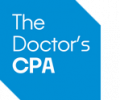As a locum tenens provider, your financial strategy isn’t just about maximizing earnings—it’s also about leveraging every available tax benefit.
Beginning in 2026, the “One Big Beautiful Bill Act” (OBBBA) introduces significant enhancements to the Child and Dependent Care Tax Credit (CDCTC) and related benefits.
These changes create new opportunities for providers, especially those who operate through business entities, to reduce taxable income, lower payroll costs, and maximize after-tax savings.
Here’s what you need to know to make these changes work for you.
What’s New in OBBBA for Child & Dependent Care
The OBBBA raises the ceiling on how much taxpayers can save through child and dependent care incentives:
- Enhanced credit rate: Families with lower incomes may qualify for up to a 50% credit on eligible expenses. The credit gradually phases down as income increases.
- Expense caps unchanged: You can claim up to $3,000 for one dependent or $6,000 for two or more, even under the new rules.
- Bigger pre-tax savings: The Dependent Care Assistance Program (DCAP) and Dependent Care FSA limits increase from $5,000 to $7,500, giving entity-owners and employees more pre-tax flexibility.
What These Changes Mean for Locum Tenens Providers
Your ability to benefit depends on both your filing status and your income structure:
- Self-employed locums: The CDCTC is available if you have earned income and tax liability, but remember it is nonrefundable, so you must owe enough tax to use it.
- Entity owners (LLC or S-Corp): You may be able to establish a DCAP or dependent care FSA within your entity, reducing both taxable income and FICA exposure.
- Employees of staffing agencies: You may qualify if your agency offers dependent care benefits, though coordination with the credit rules is key.
Important note: Using a DCAP or FSA reduces the expenses eligible for the CDCTC. For example, if you defer $7,500 pre-tax, only expenses exceeding that amount can be counted toward the credit.
For related planning, see our guide to the QBI Deduction for Locum Tenens Doctors.
Using DCAPs and the 45F Employer-Provided Child Care Credit
What is a DCAP? A Dependent Care Assistance Program allows employees, including locum tenens providers who pay themselves through an entity, to cover dependent care expenses with pre-tax dollars. This setup lowers taxable income and helps families manage the high costs of child care.
In addition to the Child and Dependent Care Tax Credit, business owners should also pay attention to employer-side opportunities. One important option is the Section 45F employer-provided child care credit. Employers that provide child care facilities or assistance may qualify for a tax credit equal to as much as 25% of qualified expenses, plus an additional 10% for resource and referral services.
Locum tenens providers who run their practices as businesses with employees, or who receive wages through their own entity, may be able to structure benefits so that their practice claims the employer-provided child care credit while they personally save on taxes. When used correctly, combining a DCAP with Section 45F can significantly reduce both income and payroll tax liabilities.
Practical Steps and Action Tips for Locums
Taking advantage of the enhanced child and dependent care benefits requires more than knowing the rules. It means applying them in a way that fits your business structure, income level, and family needs. The following steps can help locum tenens providers position themselves to capture these savings starting in 2026 fully:
- Assess your entity structure: Sole proprietors may have limited options, while LLCs and S-Corps have more flexibility with DCAPs and employer credits.
- Set up a DCAP or Dependent Care FSA: If you own your practice, explore adding this benefit to your payroll.
- Project your tax liability: Run scenarios to see how much nonrefundable credit you can realistically use.
- Coordinate benefits: Make sure DCAP elections do not cancel out your credit opportunity.
- Keep detailed records: Track qualifying expenses, provider information, and program documents.
Make the Most of These Tax-Saving Opportunities
The 2026 enhancements to child and dependent care credits and benefits give locum tenens providers powerful tools to reduce tax burdens and strengthen financial security. But the rules are complex, and the best strategy depends on your unique income, entity, and family situation.
Consult with a tax professional to ensure your entity is structured correctly to take full advantage of DCAPs, 45F employer credits, and the enhanced tax credit.
At The Doctor’s CPA, we specialize in helping locum tenens providers build strategies that maximize earnings and minimize taxes. Schedule a consultation today and start planning for 2026 with confidence.


